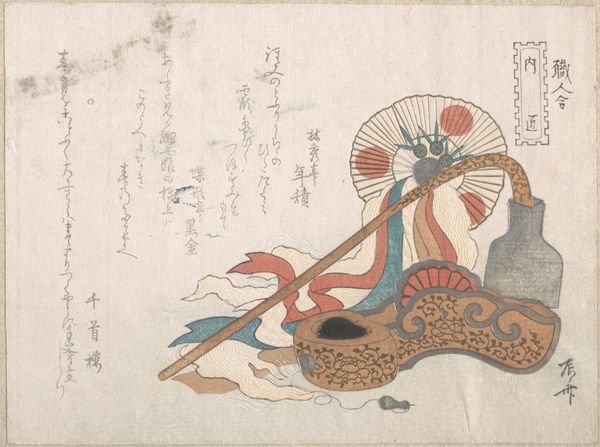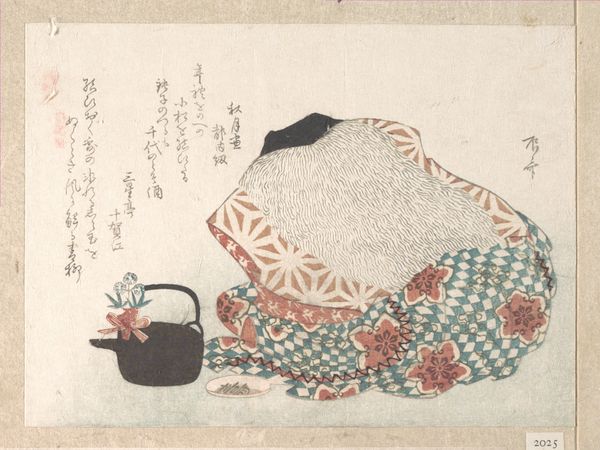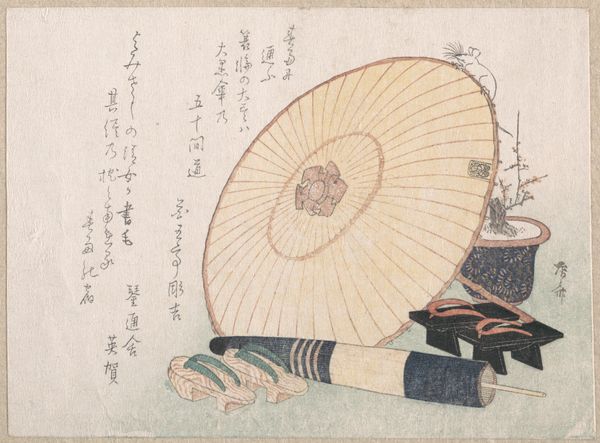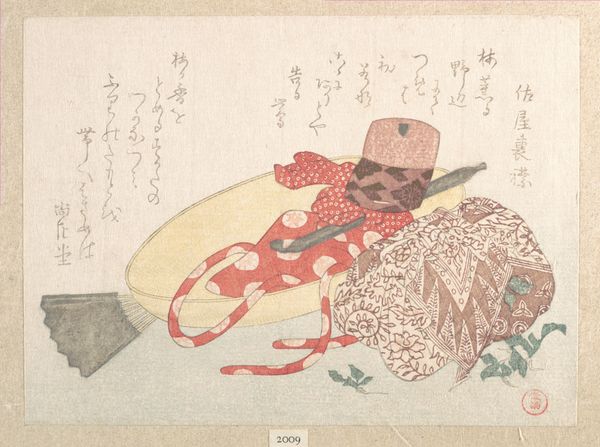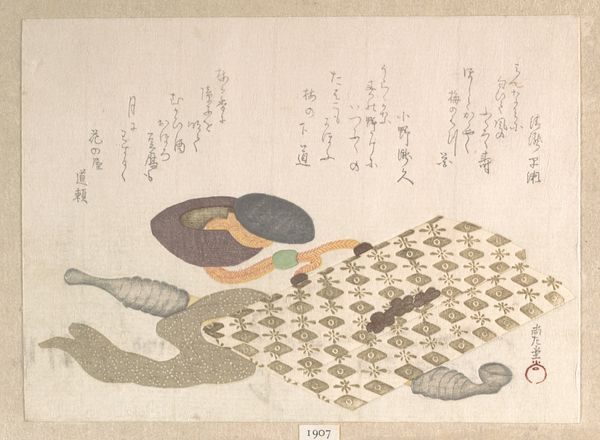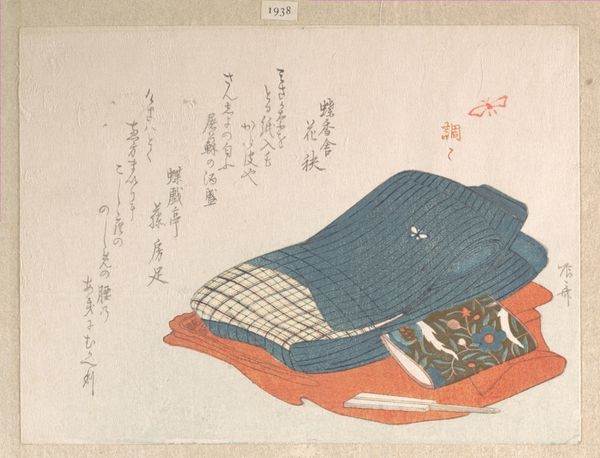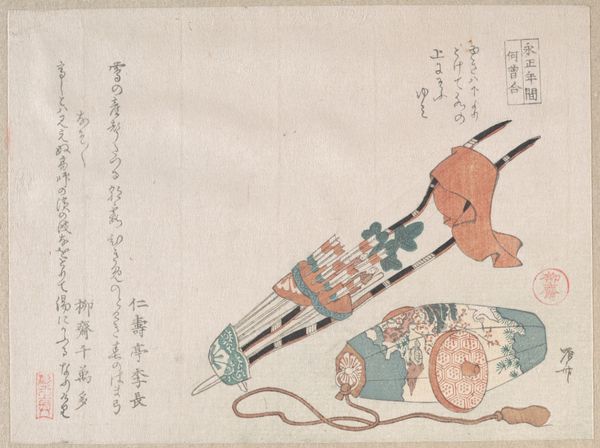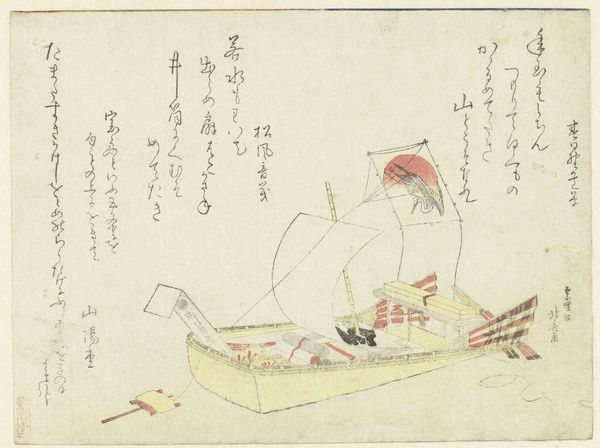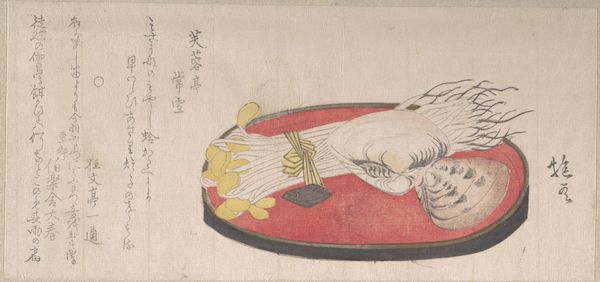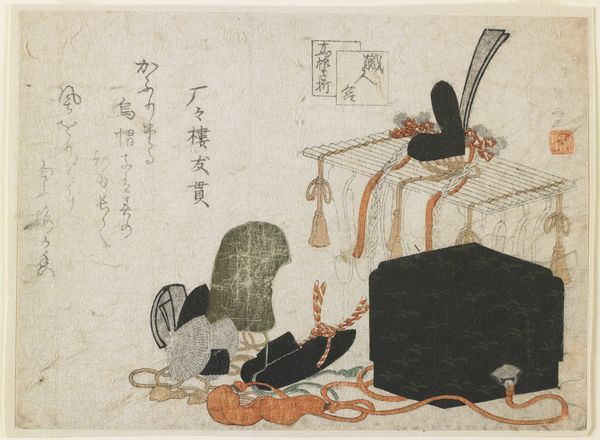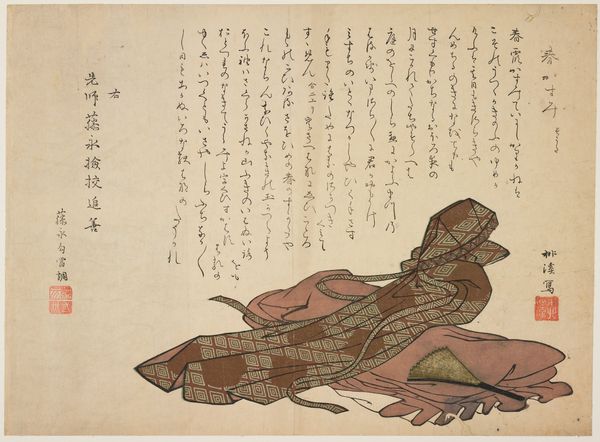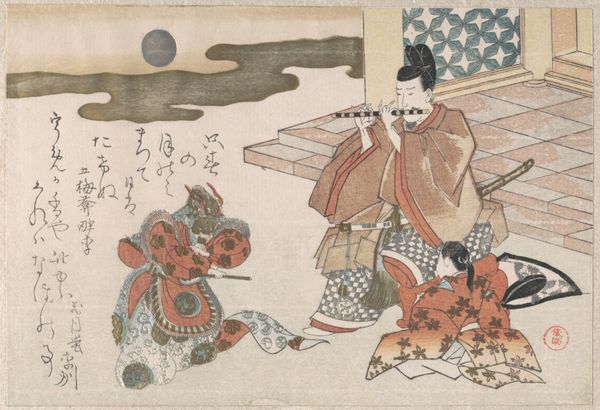
Needle-Holder with Spools and a Knife for Cutting Cloth 1761 - 1830
0:00
0:00
# print
#
asian-art
#
ukiyo-e
Dimensions: 5 7/8 x 6 15/16 in. (14.9 x 17.6 cm)
Copyright: Public Domain
Curator: Editor: This is "Needle-Holder with Spools and a Knife for Cutting Cloth" by Shūchōdō Monoyana, dating sometime between 1761 and 1830. It’s a print currently held at the Metropolitan Museum of Art. What immediately strikes me is how utilitarian it is— it depicts everyday tools, and they appear quite tactile. How do you interpret this work? Curator: It's interesting that you highlight its utilitarian aspect. Looking at the print through a materialist lens, it begs the question: What was the process of creation for such an image and who was consuming it? Ukiyo-e prints were not just art objects but commodities, reflecting a growing urban culture and consumerism. The print itself, made with woodblocks, ink, and paper, highlights the means of its production and distribution. Editor: So you are saying the depiction of everyday tools might reflect the aspirations of a rising merchant class who used them. Curator: Precisely. These tools weren't simply "everyday"; they represented a means of production and a burgeoning consumer culture. Think about the labor involved in creating the paper, carving the woodblocks, and then the final printing process. Were these items high art or commercial illustrations used in advertisement or in print media? Does the production affect our understanding and value of the artwork? Editor: It is a valuable viewpoint. Thinking about the labor behind both the making of the depicted objects and the print itself really changes my perception. I initially saw just a still life but now understand the economic factors and the social changes happening at the time impacted not only the content, but how such a print would be produced, sold, and valued. Curator: Indeed. By examining the material conditions and the social context, we can unpack the layers of meaning embedded within even a seemingly simple image. Editor: I hadn't considered those relationships before; thank you for your perspective.
Comments
No comments
Be the first to comment and join the conversation on the ultimate creative platform.

